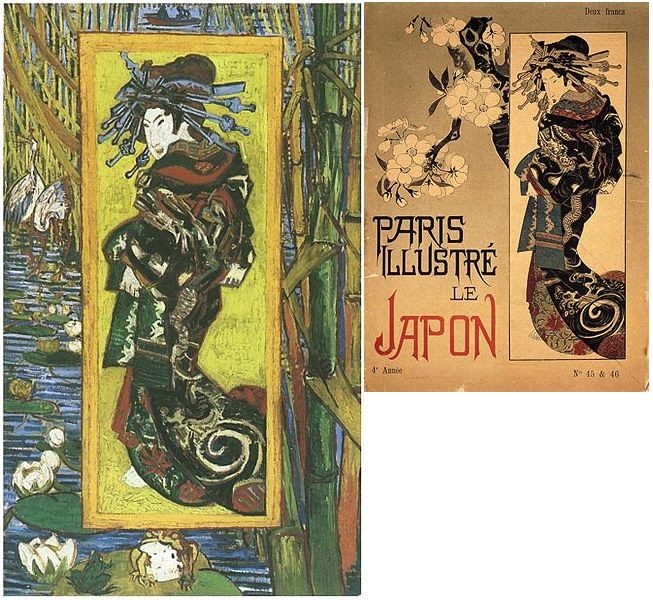
Did you know that Vincent Van Gogh traced?
Yep, he developed one of his super-famous works — The Courtesan — after being intrigued by the image of a Japanese woman in a fashion magazine (above right) and tracing it to get the essentials firmly in his mind.
So if you’ve never considered tracing — or you think it’s ‘cheating’ 😉
… now’s the time to reconsider. We use it all the time on the Cartoon Drawing Decoder courses (both the home study and guided versions), having learned about it’s ‘secret power’ from a veteran art teacher.
Why does tracing work so well?
Tracing is so effective because it builds your muscle memory – improving your hand-eye coordination and fine motor control – and it also builds your repertoire or visual memories.
That means you can draw any and all shapes faster and get their relative proportions right with greater ease… PLUS you can also remember them for future use in completely different cartoons! Sounds a bit like magic, right?
Basically, tracing is the fastest kick-start to building (or boosting — your cartooning skills.
And if you want a quick start to tracing using Procreate, here’s a quick video that will get you set up faster than ever.
What are you waiting for?!
